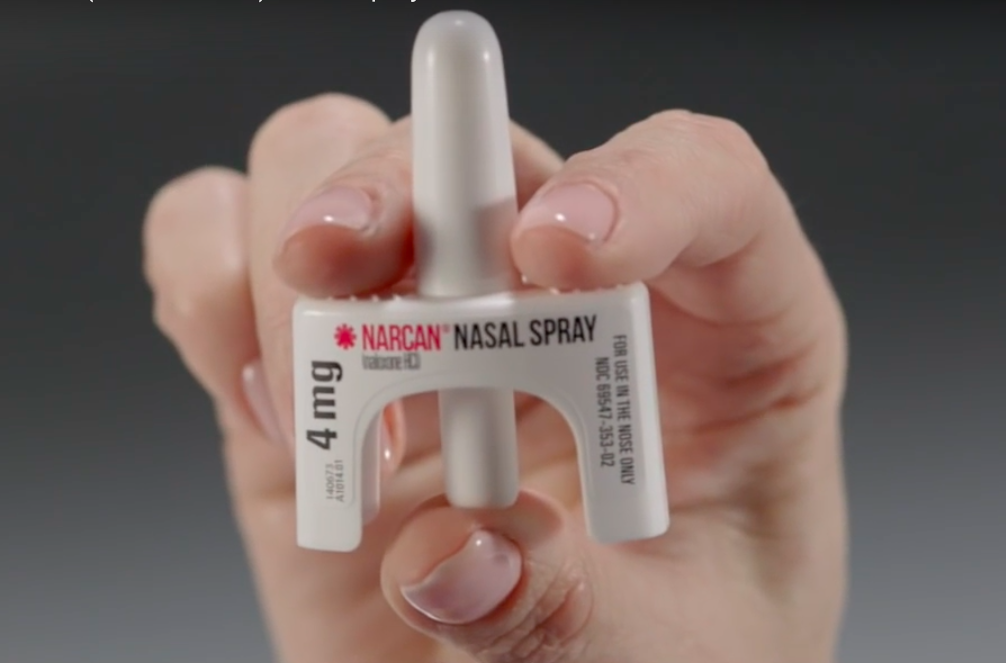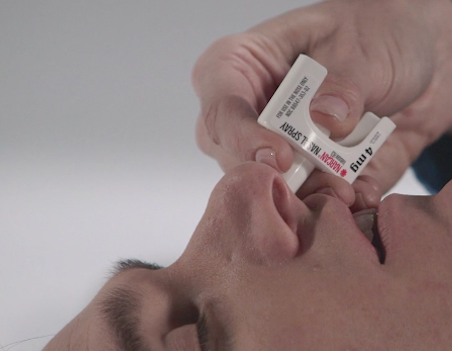|
Deaths due to opioid overdoses continue to rise. Opioid abuse knows no age, race, or economic barriers; and, abuse is often hidden, making it difficult to know who is at risk for an overdose. In April 2018 U.S. Surgeon General, Dr. Jerome Adams, issued a public health advisory urging more Americans to learn to use and carry naloxone. Most states have approved Narcan® Nasal Spray for over the counter sales and publicly encourage addicts, family, and friends to carry it. Communities provide training and naloxone to police and place naloxone in public places with AEDs; some public health agencies provide it for free. Colleges and universities provide training and naloxone to staff and students. While still uncommon, opioid overdoses have occurred in wilderness settings. This begs the following questions:
What are Opioids? Heroin, morphine, codeine, and thebaine are naturally occurring opioids made from the resin of poppy plants; hydromorphone, hydrocodone, and oxycodone are derived from resin in a lab setting. Fentanyl, pethidine, levorphanol, methadone, tramadol, and dextropropoxyphene are synthetic. All opioids depress the central nervous system (CNS) and cause feelings of euphoria; when used correctly, for short periods of time, they are effective pain medicines. All are physiologically addictive. Chronic opioid users develop a tolerance for the drug and require increasingly higher doses to achieve the same level of pain control or well-being. (Note: Opioids are often mixed with other drugs for recreational purposes.) Withdrawal signs and symptoms are the result of excessive stimulus of the sympathetic nervous system and include: increased pulse rate and blood pressure, restlessness, tremors, sleeplessness, muscle and bone pain, abdominal pain, diarrhea, vomiting, sweating, and shivering; patients in acute withdrawal may become combative. As opioid tolerance increases so does dependence…and the severity of withdrawal S/Sx. An opioid overdose typically occurs when someone takes a large amount of an opioid or a drug containing an opioid, mixes opioids with alcohol, or had a recent change in their level of tolerance. Life-threatening signs and symptoms of an opioid overdose include:
What is Naloxone? Naloxone is an opioid antagonist; it binds with and blocks opioid receptor sites in the brain, reversing the signs and symptoms of an overdose. In order to be effective, naloxone must be given before the patient goes into cardiac arrest. Except in extremely rare cases when someone is allergic to naloxone, administering naloxone to a patient who is not suffering from an oipoid overdoese does no harm. Naloxone will not prevent deaths caused by other drugs: alcohol, speed, cocaine, or sedatives (e.g.: benzodiazepines like Xananx®, Valium®, etc.). While there are numerous delivery methods only two are conducive to using in a remote setting: intranasal spray and intramuscular (IM) or subcutaneous (SQ) injection. Of the two, only Narcon® nasal spray is available over the counter in most states, making the choice easy for lay people, outdoor educators, and guides. Naloxone delivered as a nasal spray or injection takes roughly 3-5 minutes to act. If there is no response after five minutes, give another dose. Naloxone is metabolized in the liver within 30-90 minutes and its metabolites excreted in the urine over the next 3-4 days. Because naloxone is metabolized faster than most opioids—especially long-acting opioids like methadone or sustained-release pain compounds—it’s vital to carry more than one dose. Patients should be monitored for 2-3 hours as further doses may be necessary to treat a relapse. Acute withdrawal symptoms are possible but rare with intranasal administration of naloxone but cause for concern should they occur as the the patient may become combative and a danger to themselves and others. Naloxone slowly loses its potency over time or if it is exposed to too much heat, cold, or sunlight. That said, using expired naloxone will not cause harm but you may need more doses to reverse the S/Sx of an opioid overdose. Ideally you should replace expired all expired drugs, and store naloxone in a dark and dry place between 80°F (25°C) and 40°F (5°C)...you want to make sure that it is easily accessible should you need it. When should I administer naloxone?
 Directions for administering an intramuscular injection of naloxone Carry naloxone in a 1 ml snap-top vial (they are easier to use than a 1 ml ampoule); dose is 0.4 mg/ml. Consider carry a vial and syringe in a capped PVC pipe container; use the capped pipe as a sharps container to safely carry the used needle and syringe out of the backcountry for disposal. Use a 21 to 23 gauge needle 1 to 1.5 inches long for an adult.
Interested in learning more about wilderness medicine? Take one of our wilderness medicine courses. Guides and expedition leaders should consider taking our Wilderness First Responder course.
Looking for a reliable field reference? Consider consider purchasing one of our print or digital handbooks; our digital handbook apps are available in English, Spanish, and Japanese. Updates are free for life. A digital SOAP note app is also available.
0 Comments
Your comment will be posted after it is approved.
Leave a Reply. |
Categories
All
Our public YouTube channel has educational and reference videos for many of the skills taught during our courses. Check it out!
|


 RSS Feed
RSS Feed
